Are you a fan of forests and trees? The Upper Delaware River region is blessed with an abundance of both, and a growing group of tree lovers is launching an exciting initiative known as “Trees …
Stay informed about your community and support local independent journalism.
Subscribe to The River Reporter today. click here
This item is available in full to subscribers.
Please log in to continueNeed an account?
|
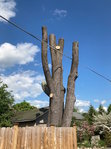
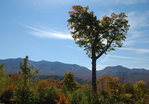

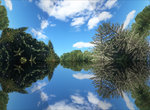

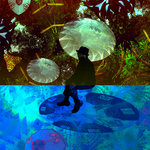
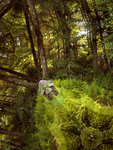
“A forest is a home. All the forests of the global garden are homes to microbiota, insects, birds, mammals and plants. These homes are important to each and every form of life. No one species is better or worse than the other. They are equal to one another in a chain of connectivity. Each bee, each wolf has the right to dream or die, has the right to live a life, its own particular life, of wonder. And it has a right to that home until the end of time.”
To find a list of trees recommended for planting in the area where you live, visit calloftheforest.ca/plant-a-tree/.
Excerpt from “The Global Forest: 40 Ways Trees Can Save Us.” Support independent bookstores at https://bookshop.org/books/the-global-forest-forty-ways-trees-can-save-us/9780143120162.
Related
Are you a fan of forests and trees? The Upper Delaware River region is blessed with an abundance of both, and a growing group of tree lovers is launching an exciting initiative known as “Trees Please.”
The seeds of the project were sown in an enthusiastic conversation about trees between artistic collaborators Daria Dorosh and Sandy Long, just before the pandemic disrupted life. The project lay fallow until earlier this year, when Dorosh and Long reconnected and found the roots of their mutual interest in trees to be alive and thriving.
Dorosh, a passionate admirer of the work of botanist, medical biochemist and tree advocate Dr. Diana Beresford-Kroeger, became determined to find a way to share the author’s ground-breaking work more widely here.
In a New York Times story from February 2022 about Beresford-Kroeger, Cara Buckley writes that “her main focus for decades now has been to telegraph to the world, in prose that is scientifically exacting yet startlingly affecting, the wondrous capabilities of trees.”
At 77, Beresford-Kroeger steadfastly upholds her goal of combating the climate crisis by fighting for forests and cultivating the native trees she has planted at her home in Ontario—a collection of “hardy specimens that can best withstand a warming planet.”
When Dorosh learned that the author’s literary agent, Stuart Bernstein, lives locally, she reached out to him to discuss the possibilities for sharing her work with a regional audience through the River Reporter. Publisher Laurie Stuart eagerly embraced the idea and the quartet has been bringing things into focus for further conversation with a wider audience.
“My interest in this project is to bring information to our community about the current botanical research and historic cultural knowledge on trees as individuals and communities,” said Dorosh. “I envision it as a project that is led by artists and creative thinkers who bring their skills together to offer people more ways to enjoy the nature around them and make informed decisions about it.”
The core collaborators aim to convene a broader group of others interested in helping to shape what the elements of the project will look like, specify additional steps to take, and identify who is willing to get involved.
“We share an overarching goal to raise awareness of the almost endless attributes of trees, to celebrate them through the arts, to provide education related to their well-being, to share our appreciation for their many gifts, to connect with others who also value trees and to foster conversations about our relationships with trees,” said Long.
“We’re also discussing possibilities for organizing events such as tree plantings, walks, talks, readings, arts experiences ranging from painting to poetry to music, as well as community conversations and roundtable discussions to bring in voices from differing perspectives.”
Stuart’s enthusiasm for growing the project through the pages and online presence of the River Reporter can be traced to her love of trees. “I have always had an affinity with the forest, spending long hours in a backyard woods as a child, and working through my early twenties as a YMCA camp counselor,” she said.
“Our connection to the natural world, understanding its rhythm and its collaborative relationships, is imperative to our future. I’m delighted to have the opportunity to foster a greater understanding through the pages of the River Reporter, and moving our collective experience toward creativity and knowledge combined with the action of planting and caring for trees.”
Beresford-Kroeger is no stranger to the Upper Delaware River region. Bernstein’s professional and personal relationships with her resulted in a visit here that he remembers well.
“It was in the fall of 2013, after I had been Diana Beresford-Kroeger’s literary agent for several years, that I received an email from Adriana Magaña, who, with her husband Andrew Faust, operate The Center for BioRegional Living in Ellenville, New York,” writes Bernstein.
“They are two of the world’s leading permaculture designers and teachers. I didn’t know this at the time, but Adriana revealed that she and many of her colleagues throughout the region were aware of Diana’s work and were interested in having her visit. Adriana and I got to planning a visit by Diana for the following spring. She gave a number of talks, appeared on three radio programs on the ever-welcoming WJFF, including interviews by Dick Reisling and Rosie Starr, and concluded her trip with a speaking engagement in Brooklyn.
“Over the course of her stay at my place I managed to learn more about the flora and fauna on my own property than I otherwise would have in a lifetime. Diana’s influence can be seen in the number of native trees planted (red oak, wafer ash, mockernut hickory, catalpa, tulip, linden, and black willow, to name a few) and also in the aesthetics of my garden, such as it is (always a work in progress). I look forward to a day when she can return!”
Dorosh and Long plan to share artwork and images such as those included with this story and to encourage sharing of creative work by fellow tree-lovers.
To be kept informed or to engage with the evolution of Trees Please, contact publisher@riverreporter.com.
Related stories

Comments
No comments on this item Please log in to comment by clicking here